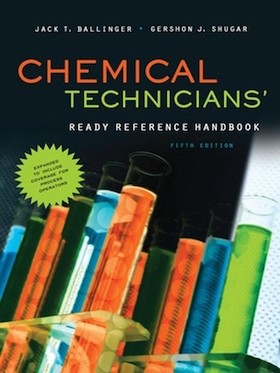
-----
Controlling iron content in hydrochloric acid
(to provide context, hopefully helping readers more quickly understand the Q&A's)
Some questions which seem pretty simple, like how much iron content is permissible in HCl pickling, turn out to be a little complicated. Perennial attempts to answer this question scientifically often reference "The Kleingarn Curve". So, in addition to the answers on this page, readers may want to view our library article "The Kleingarn Regenerated Spent Acid at Increasing Ferrous (Fe+2) and Ferric (Fe+3) Chloride Content" which was generously contributed by reader Barlow R. Campano, Chemical Engineer at HIDADA Galvanizing Plants 1 & 2, Jeddah, Saudi Arabia.
Q. Hi,
We use a pickle tank of hydrochloric acid to etch the chain link before zinc is applied. The % is 14 to 17 percent acid to water. The iron content test that I do on the tank of acid comes out to a figure of for example 3.3% or so.
My question is what is too much iron content in the tank and when should I change or dump some of it to get it back below the number. What is that number? I have heard 4 and all the way to 7 % please give me a good figure of when acid starts to go bad after iron content rises to?
Thank you,
chain link - Dallas , Texas
2004
A. Gentleman,
Certainly, increase in Iron content will increase the pickling time because of the inhibition. As a rule of thumb 26 grammes per liter of iron in the pickling bath shall be fixed for discarding the bath.
- Bangalore, Karnataka, India
A. In galvanizing it is possible to pickle in iron-acid (hydrochloric acid with iron-content even until 180-200 g/l), depending on the temperature of the pickling. In fact it becomes Iron chloride pickling. Iron chloride dissolves iron oxides better than low iron acid. Big advantage is that you can use the pickling much longer and it is even possible to sell the old pickling acid as iron chloride. This is already practice in Western Europe !

Dolf van den Berg
- Leusden, The Netherlands
A. Like Dolf said, Fe content is not a problem. We start our "new" tanks with about 12% HCl and this is made with about 30% old acid to get the Fe content up high enough! (balance water) We run our acid up to 220 grams per litre Iron chloride, at which time the HCl content is as low as 1%. It still pickles well at this.

Geoff Crowley
Crithwood Ltd.
Westfield, Scotland, UK

Q. I understand that it is possible to pickle at these elevated Iron levels (180-200 grams / liter) but how much slower is the pickling rate than lower iron concentrations around 30-50 grams / liter?
Phil Shawk- Canton, Ohio
2005
![]() Hi Phil and other readers: Since the posting of this question, we've acquired a Hydrochloric Acid Pickling Chart, generously contributed by reader Barlow R. Campano, Chemical Engineer at HIDADA Galvanizing Plants 1 & 2, Jeddah, Saudi Arabia, which attempts to answer this question.
Hi Phil and other readers: Since the posting of this question, we've acquired a Hydrochloric Acid Pickling Chart, generously contributed by reader Barlow R. Campano, Chemical Engineer at HIDADA Galvanizing Plants 1 & 2, Jeddah, Saudi Arabia, which attempts to answer this question.
Luck & Regards,

Ted Mooney, P.E.
Striving to live Aloha
finishing.com - Pine Beach, New Jersey
Ted is available for instant help
or longer-term assistance.
Analysis for iron concentration in HCl bath
Q. What method of analysis do you use to determine the iron concentration in your baths?
Carla Jones- Fredericksburg, Virginia
2005
A. We use a titrating method to check both acid and Iron concentrations. Our Acid titrant is sodium carbonate / sodium hydroxide. Our Iron titrant is Potassium Dichromate.
Phil Shawk- Canton, Ohio
2005
Q. I want to measure the accurate HCl concentration of the Pickling Acid which is used for steel pickling. I did titration of the pickling acid sample with sodium carbonate by using methyl orange
⇦ on
eBay or
Amazon [affil link]
indicator, it turns red color to orange color as end point but the problem is that the color cannot be sharply observed as to distinguish red-orange end point is difficult.
Usually when I do titration of 0.5 M HCl solution with 0.1N sodium carbonate solution by using methyl orange
⇦ on
eBay or
Amazon [affil link]
indicator at the end point the color disappears so I can easily distinguish the end point in this case, kindly tell me which indicator I should use so I can get a clearly visible end point to determine the HCl concentration in the Pickling Acid for Steel.
Or what is the most accurate or standard procedure to find out the HCl concentration and Iron content present in the HCl Pickling Bath of Steel.
What are the laboratory's procedures/method to measure Hydrochloric Acid (HCl) concentration and Iron (Fe) content present in the Pickling Acid samples of Steel Industry?
- Karachi, Pakistan
August 8, 2012
A. Dear Akhtar,
We use methyl orange
⇦ on
eBay or
Amazon [affil link]
as indicator in the titration to measure % HCl in pickling baths, and sodium hydroxide 1N as a titrant in this case. If the pickling bath has much iron dissolved, the end point is when the red color disappears and you can see a green precipitate (iron) and the sample of light-yellow color...
And for the iron, we use potassium permanganate
⇦ on
eBay or
Amazon [affil link] 0,1 N. This is not selective, if you have some oxidable matter in solution, you will measure it as iron and you will have an excess difference. But for qualitative matter, it is useful to know if the pickling bath can be used or must be discharged as waste.
I hope this will be useful. Best regards,
Self-Drilling Fasteners Manufacturer - Buenos Aires
A. Yes, that endpoint is very hard to see. I have two suggestions:
1) Use very little indicator. 3 drops is plenty.
2) Titrate rapidly. The color change isn't very sharp and if you grossly overshoot you can always redo it.

Dave Wichern
Consultant - The Bronx, New York
[editor appended this entry to this thread which already addresses it in lieu of spawning a duplicative thread]
Q. Sir,
What is the safe & accurate process of lab analysis to find Fe content in HCl?
How much Fe is good in 20% HCl?
- Jamshedpur, Jharkhand, India
December 13, 2012
A. Analytical procedure of Iron content in HYDROCHLORIC ACID BATH,
Take 1 ml of bath solution, Add 50 ml of D.M.WATER, Add 10 ml of 50% sulfuric Acid Titrate against with 0.1 N Potassium Permanganate. End point- Colourless to Light Pink Colour.
BURETTE READING * 5.56 = --------gm / ltr of Iron content
A.S.J. PETER- Bangalore, India
June 25, 2013
Q. I just wanted to ask your advice on the lifespan of a pickling bath. Historically, we have always renewed the acid solution usually after 2 years, or thereabouts.
When the level of the acid drops to near 70 g/l (7%), and the iron content is around 25 g/l, we usually dispose and renew. Our solution is not heated and we have one rinse tank after the pickling tank. We are galvanizing 3m long steel sections most of the time and the steel is predominantly rust free before we pickle.
So after reading the above posts, I am now thinking that we can run our pickling tanks with a higher level of iron and not dispose and renew so often as we have done. My questions are:
What issues may we encounter if we do this? I have read that we may encounter reduced pickling times, and also an increase in dross formation in the zinc bath. Can anyone please confirm what we can expect if we ran the iron levels to say 100 g/l or above?
Legrand - Scarborough, UK
April 27, 2015
Q. We are following a lot of procedures in our company -- one of them about free acidity (% HCl) of pickle solutions. After testing, we calculate free acid content = 7.3 * y
How can we be sure of testing validity and how can we calculate free acid concentration from this test?
zainab AL-Janabi- Saudi Arabia
May 21, 2015
![]() Hi Zainab. What is "y" or what is the value of "y"?
Hi Zainab. What is "y" or what is the value of "y"?
... and don't you dare tell us y is the free acid content divided by 7.3 :-)
Regards,

Ted Mooney, P.E. RET
Striving to live Aloha
finishing.com - Pine Beach, New Jersey
Ted is available for instant help
or longer-term assistance.
|
|
Q. My question is not related to finishing but I want to know whether titration can be used to find the amount of iron dissolved in let's say 10% HCl solution. - ahmedabad,gujarat, India June 15, 2015
But the thing is, you said "not related to finishing" so we must then ask: what does it relate to then? Best of luck,  Ted Mooney, P.E. RET Striving to live Aloha finishing.com - Pine Beach, New Jersey Ted is available for instant help or longer-term assistance. |
⇦ Tip: Readers want to learn from your situation;
so some readers skip abstract questions.
Q. Good day,
What can I add in a pickling bath to increase Fe content?
- Gauteng, India
March 30, 2022
A. Hi Mutshidzi. Geoff explains that he simply starts with 30% old (used) pickling acid.
Luck & Regards,

Ted Mooney, P.E. RET
Striving to live Aloha
finishing.com - Pine Beach, New Jersey
Ted is available for instant help
or longer-term assistance.
Q. We maintain our baths usually between 5 to 17%. However I am running on Low Fe content, I wanted to know what can I use to increase the Fe content. Thank you.
Mutshidzi Mulelu [returning]- Gauteng, India
A. Hi again Mutshidzi. I'm still not totally sure what you're trying to do ... but assuming your pickle acid is HCl it should be easy to add ferric chloride ⇦ on eBay or Amazon [affil link] or Ferrous Chloride if you don't have the old acid available that Geooff suggests.
Luck & Regards,

Ted Mooney, P.E. RET
Striving to live Aloha
finishing.com - Pine Beach, New Jersey
Ted is available for instant help
or longer-term assistance.
Q. Good day.
A.S.J. PETER with the analytical procedure you provided for testing Fe in HCl, is it allowed to convert g/L to % without using the S.G of the HCl or you can only use g/L?
- Germiston| Gauteng
August 17, 2022
A. Hi again, Mutshidzi. We'll try to alert A.S.J. PETER of your posting, but his posting was from 9 years ago, so we may be unable to reach him. It's true that when a concentration is expressed as a percentage it should be labeled as "% by weight" or "% by volume" and whether that percentage is based on molecular weight or a commonly used and available dilution -- in fact just yesterday we printed a complaint about that on another thread.
I see that both 50% v/v and 50% w/w sulfuric acid are widely packaged, sold, and available -- so I agree that I do not know which Mr. Peter was referring to. If he was referring to 50% v/v, yes, g/l and % would be convertible.
Luck & Regards,

Ted Mooney, P.E. RET
Striving to live Aloha
finishing.com - Pine Beach, New Jersey
Ted is available for instant help
or longer-term assistance.
A. Hi Ted and Mutshidzi,
The 50% sulfuric acid is added only to maintain the mix very acidic. The results you have are expressed by volume, so it is g/l of Fe content.
You can express it in % m/v of Fe content just dividing by 10. But to express it in % m/m you must have the specific gravity of the solution.
We use the same procedure as A.S.J. PETER so this is my grain of sand :)
Best of luck!
- Cañuelas, Buenos Aires, Argentina
January 4, 2023
![]() Thanks as always Daniel!
Thanks as always Daniel!
Luck & Regards,

Ted Mooney, P.E. RET
Striving to live Aloha
finishing.com - Pine Beach, New Jersey
Ted is available for instant help
or longer-term assistance.
Q. Hi Phil
I got a question to ask can you share with me the method to determine acid and Iron concentrations in hydrochloric acid?
Thanks, regards, Qohhar
QA employee - Malaysia
March 20, 2023
A. Hi Qohhar,
It's unlikely that Phil will see and be able to give you his method 17 years later, but Akhtar, Daniel, Dave, and A.S.J. offer their methods above.
Luck & Regards,

Ted Mooney, P.E. RET
Striving to live Aloha
finishing.com - Pine Beach, New Jersey
Ted is available for instant help
or longer-term assistance.
Q. Hi Phil
Is there any formula for iron content which you can share to me to conduct acid and Iron concentration analyses effectively?
Because right now our factory has a doubt to determine acid and Iron concentrations effectively.
The formula /calculation we use now:
S1V1=S2V2
V1=Volume of Na2CO3 solution
V2=Volume of pickling (HCl) solution tested = 2.5 ml
S1=Strength of Na2CO3 solution = 0.5N
S2=Strength of Pickling (HCl) solution Tested
S2= S1V1/V2
Pickling (HCl) acid content=Molecular weight x S2
QA eng - Malaysia pahang
March 22, 2023
Ed. note: Hopefully Qohhar will eventually see this, but it's looking like our return mail to him might have got caught in his spam filter :-(
Q. So Sir how my question?
Muhammad QohharQA eng - Malaysia pahang
April 4, 2023
A. Hi Qohhar. Your postings don't acknowledge previous postings in response to yours, and you haven't acknowledged our e-mail either. So we don't know what you are seeing and not seeing on this page -- your web browser's cache may not be refreshing :-(
Your formula sounds okay for HCl titration, but you can't determine iron from that procedure. For iron content please view A.S.J.'s procedure, and Daniel's clarification. Please acknowledge that you are seeing these postings. Thanks!
Luck & Regards,

Ted Mooney, P.E. RET
Striving to live Aloha
finishing.com - Pine Beach, New Jersey
Ted is available for instant help
or longer-term assistance.
Q. Hi A.S.J.
I have question why we need to use specific gravity in term to determine iron content in acid solution for galvanizing process. TQ, hopefully you can understand what I'm trying to ask because I'm not a chemist background. Sorry for inconvenience.
QA eng - Malaysia pahang
April 5, 2023
Q. Sir, is there any other alternative method for determining the Fe content? We are working in a middle east region and here potassium permanganate is rarely available. Hoping for the solution from you. Thanks.
Mansi Solanki- Oman
April 12, 2023
9th Edition, Vol. 5
"Surface Cleaning, Finishing & Coating"

on eBay or Amazon
or AbeBooks
(affil link)
A. Hi Mansi.
• A fairly similar analytical procedure based on potassium dichromate is available in Analysis of Electroplating and Related Solutions
[on
Amazon,
...
on AbeBooks affil links] if that book and that chemical are available.
• ASM Metals Handbook Vol. 5 offers this formula for a rough estimate:
D = 0.9971 + (4.46 x 10 -3) CHCl + (8.15 x 10 -3) CF2Cl2
• Thread 36286 offers a possibility based on nitric acid
• you can search the site with your search terms for more ideas on the subject.
Luck & Regards,

Ted Mooney, P.E. RET
Striving to live Aloha
finishing.com - Pine Beach, New Jersey
Ted is available for instant help
or longer-term assistance.
Q, A, or Comment on THIS thread -or- Start a NEW Thread

